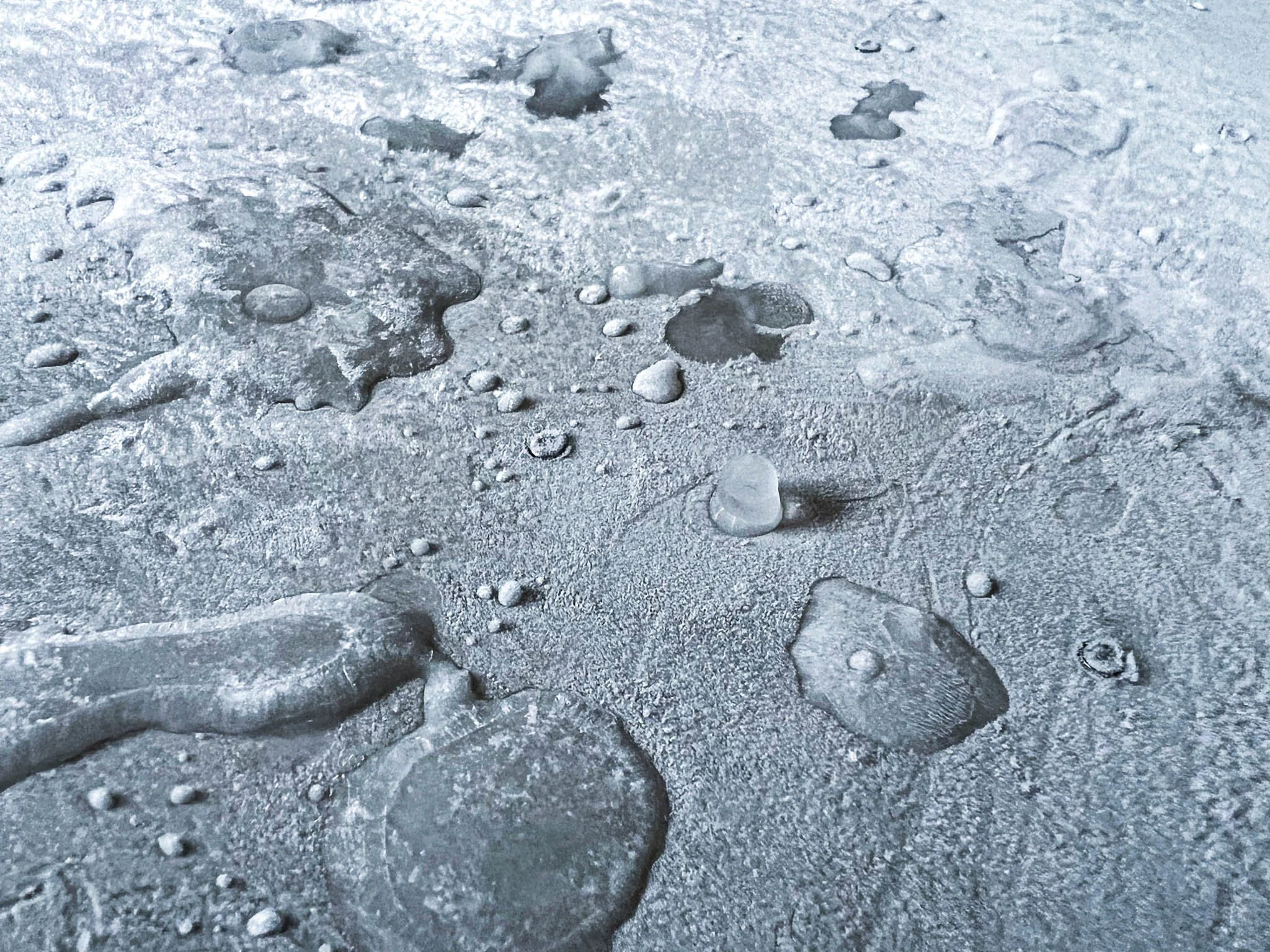CryoScapes: Landscape Painting with Water, Ice, and AI
Jiabao Li, Ziyuan Jiang, Kuan-Ju Wu, Yasuaki Kakehi, 2025
Cryoscape began during my Arctic Circle Artist Residency in Svalbard, inspired by water’s diverse forms—vapor in the clouds, snowflakes in the sky, liquid waves in the ocean, the warmth of hot water in my hand, and the solid majesty of glaciers and sea ice. Each phase of water reveals distinct morphologies. We are all connected through bodies of water.
We developed a 3D ice printing system to create intricate sculptures that evolve with temperature changes. Surface treatments, including hydrophobic and hydrophilic materials, guide the water’s behavior. The interaction of water with these surfaces produced wildly different structures—some resembling lunar landscapes, others evoking the snowy expanses of Hokkaido, the crystalline intricacies of microscopic images, or even the forms found in Noguchi Playgrounds or the paintings of Kåre Tveter. A macro camera captures these formations in real-time, while AI interprets them into Haikus.
Cryoscape evolves as it travels to different cities. In Alaska, Tokyo, Austin, and beyond, the humidity, temperature, air quality, and water calcium uniquely to the city shape the ice sculptures, making each iteration site-specific and collaborative with nature.
The 3D ice printing technique has potential applications in fields like tissue engineering, microfluidics, and soft robotics. Ice, as a biocompatible material, can serve as a temporary support structure for 3D printing, easily melting away after use to enable precise and adaptable designs.
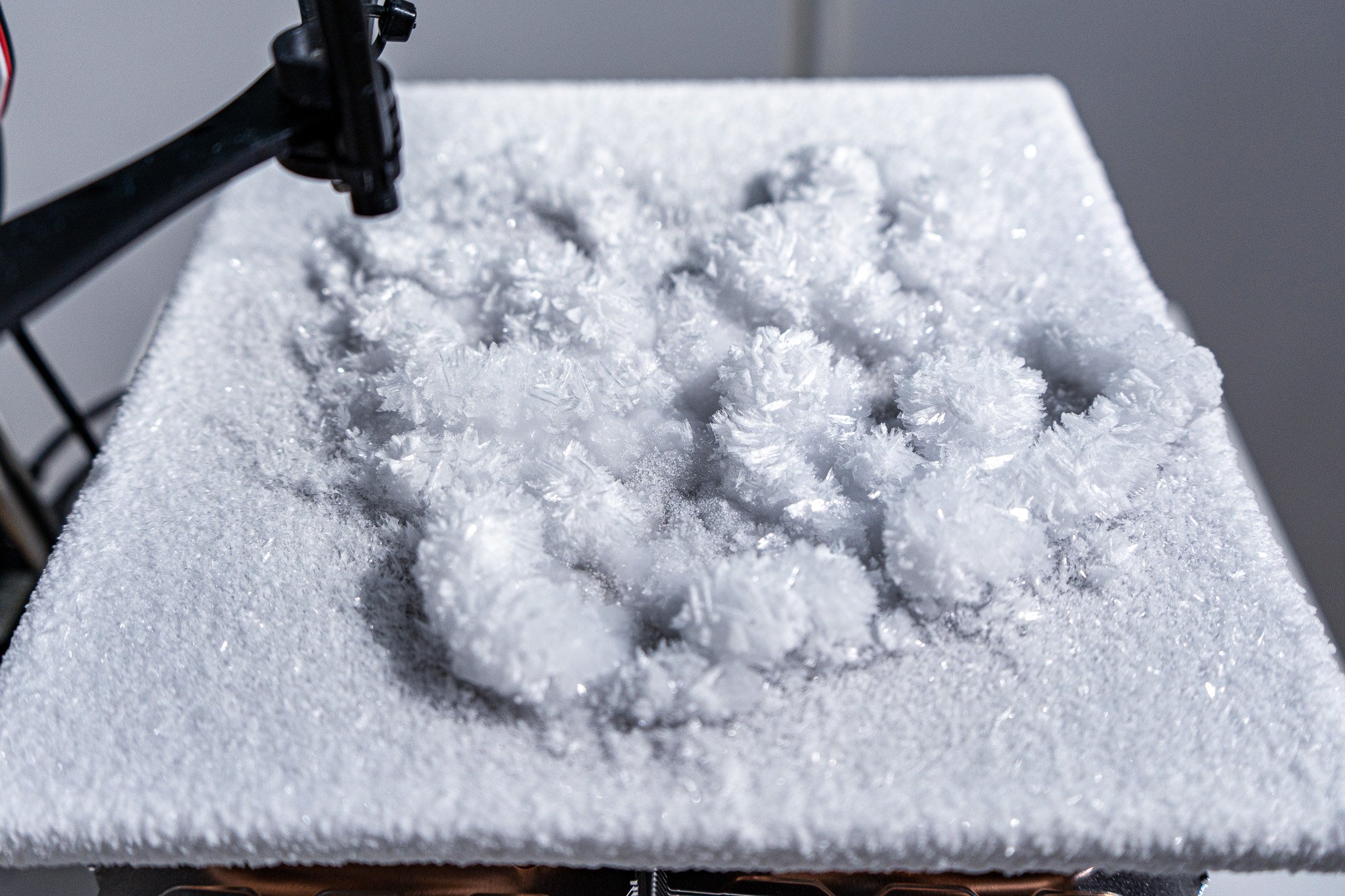
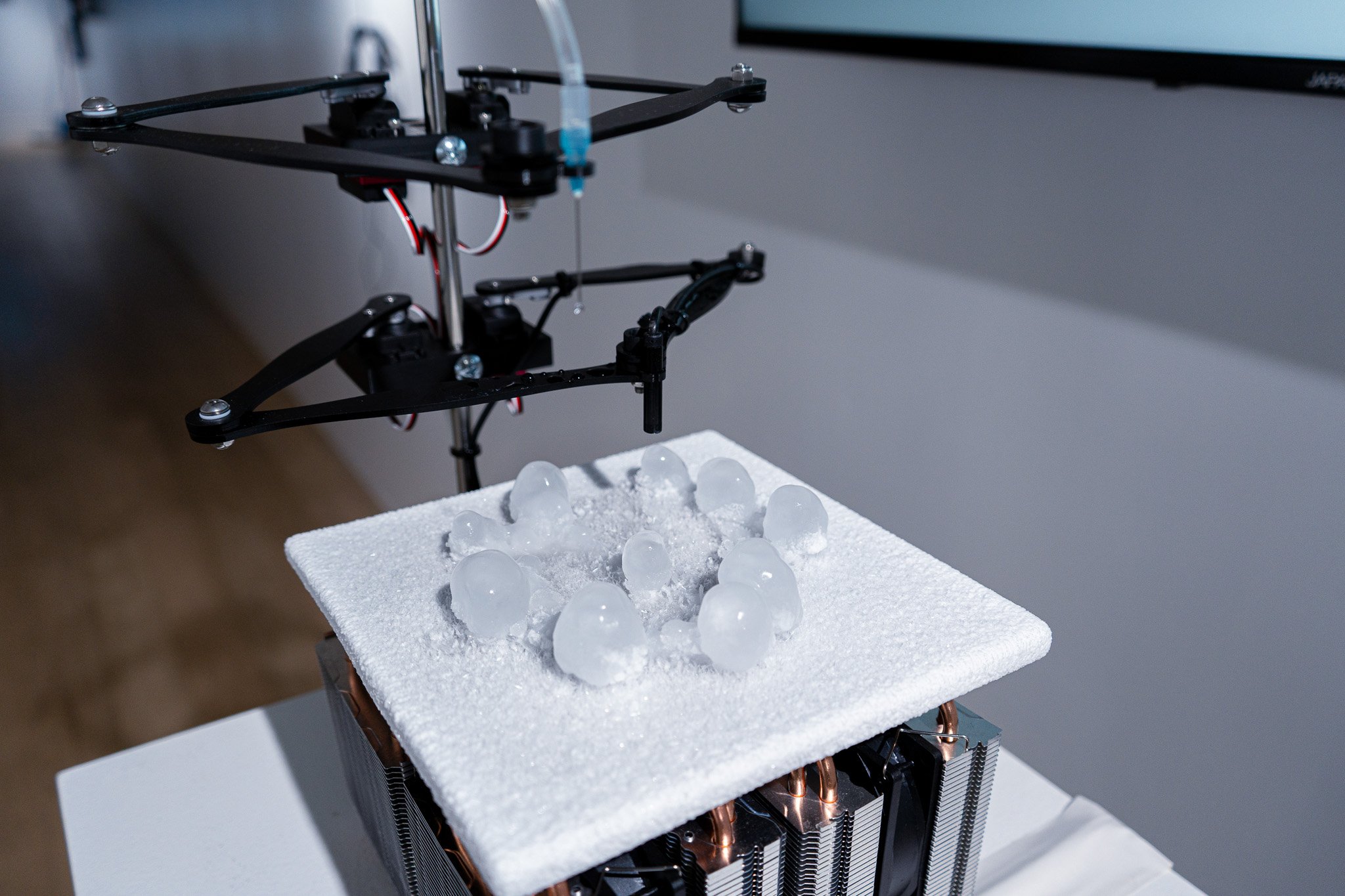
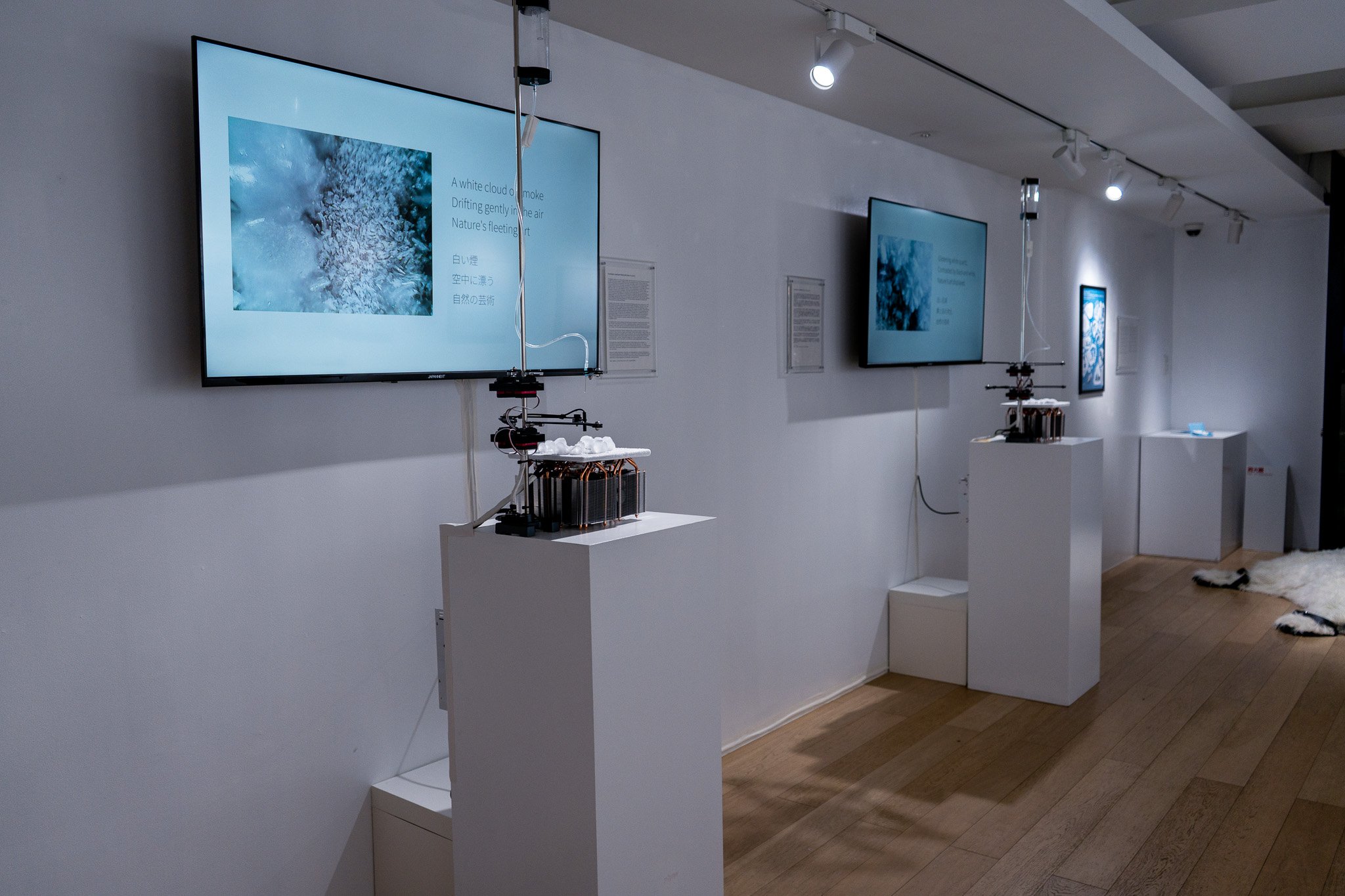
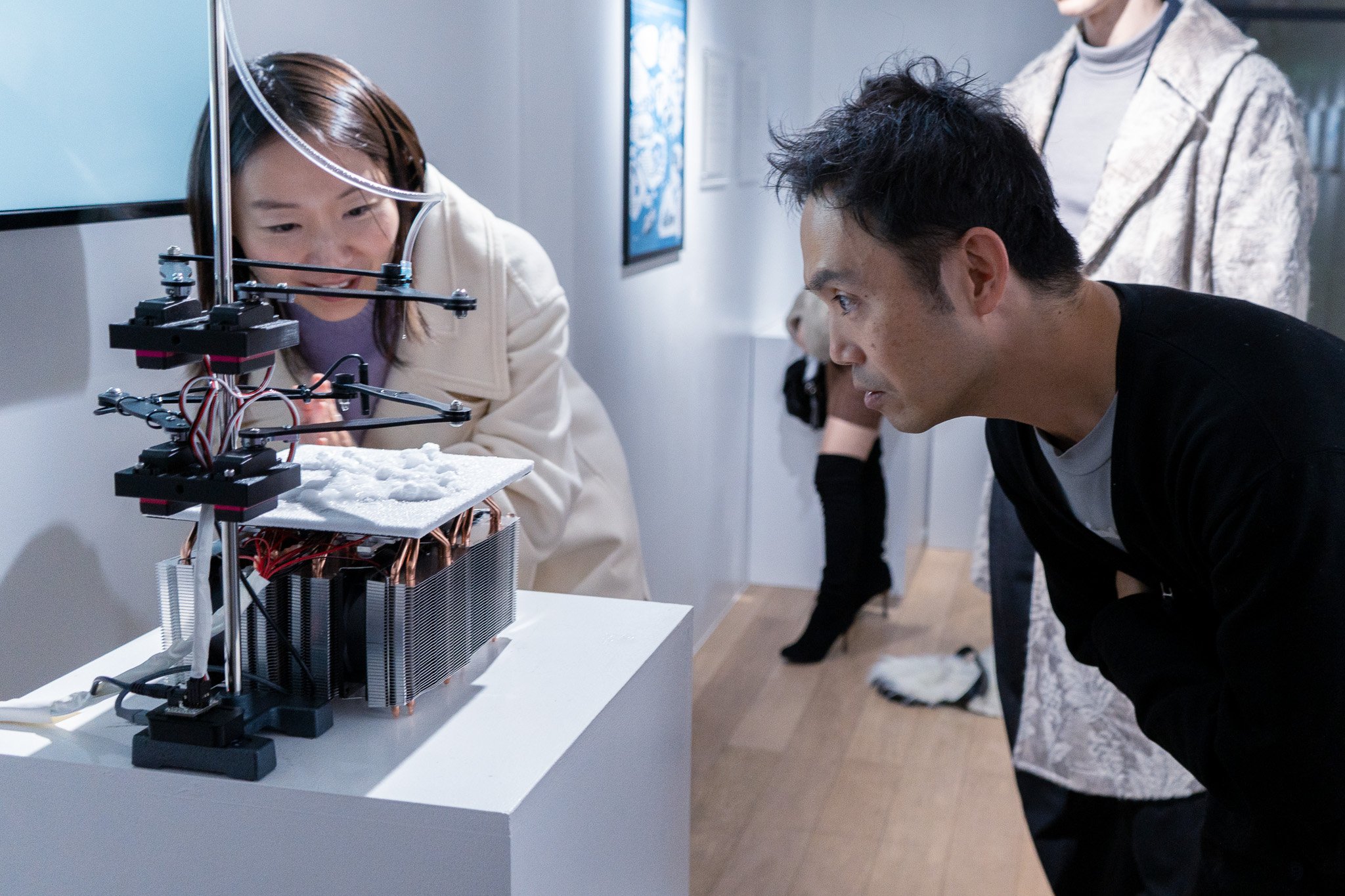
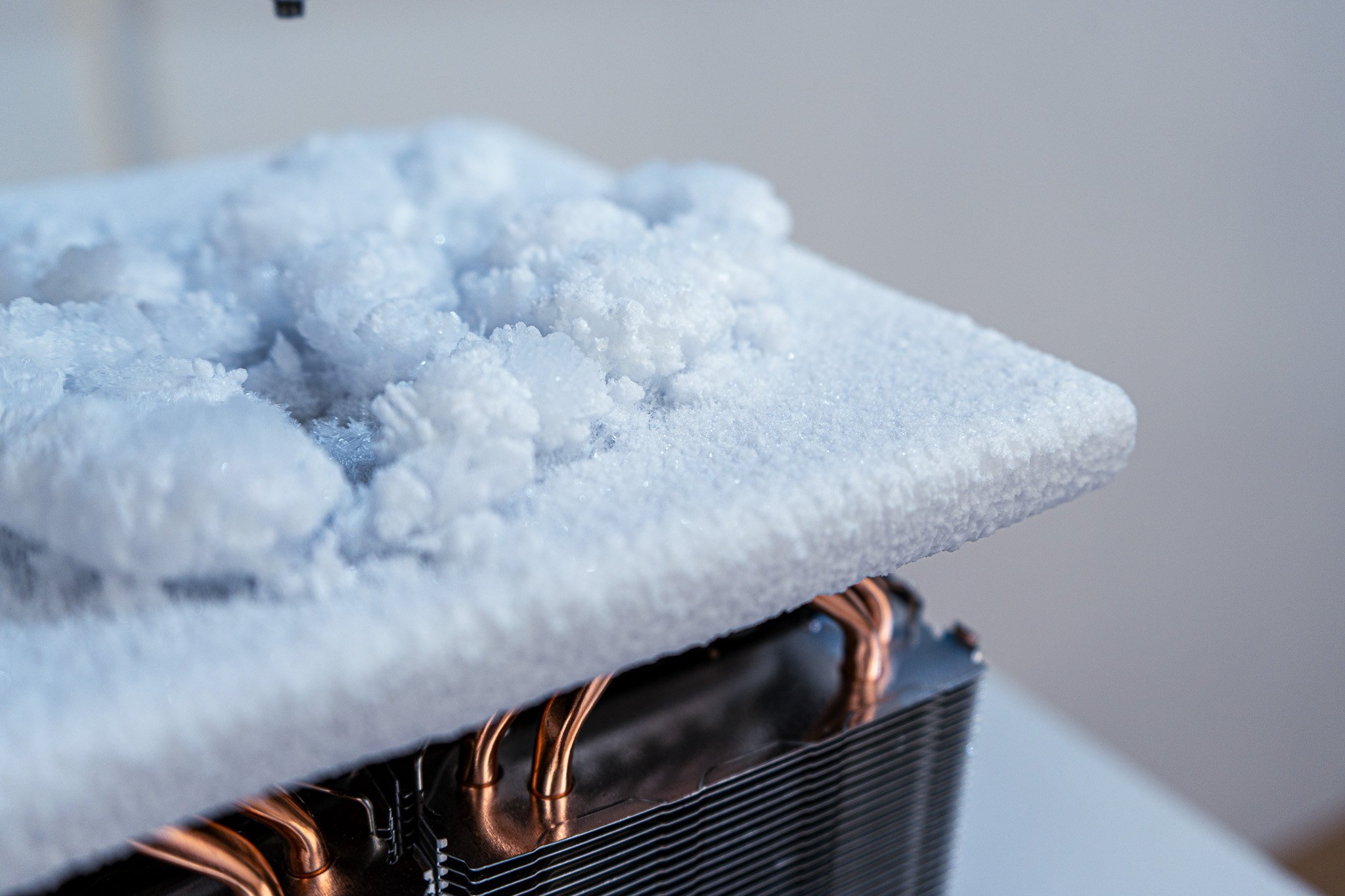
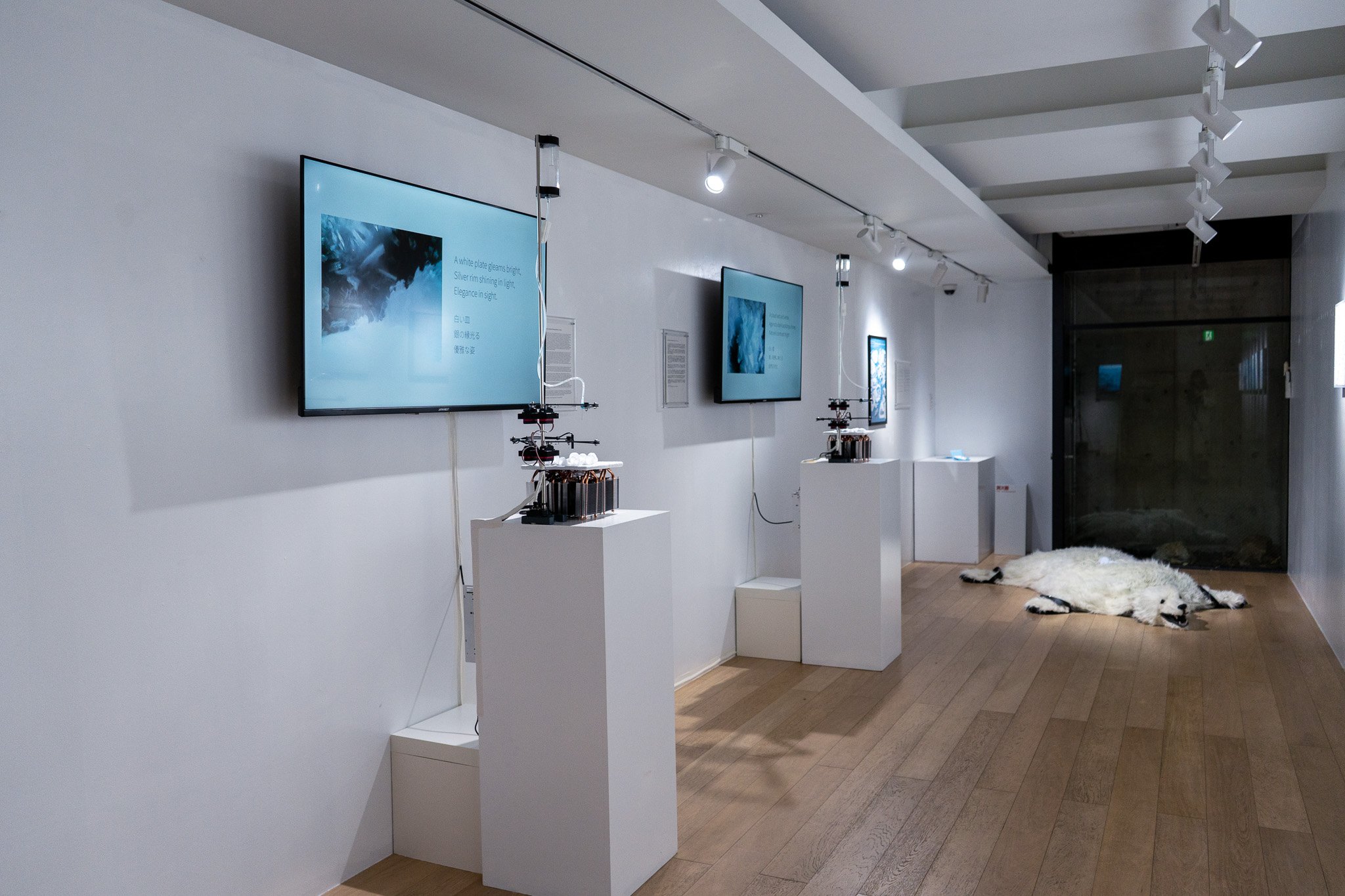
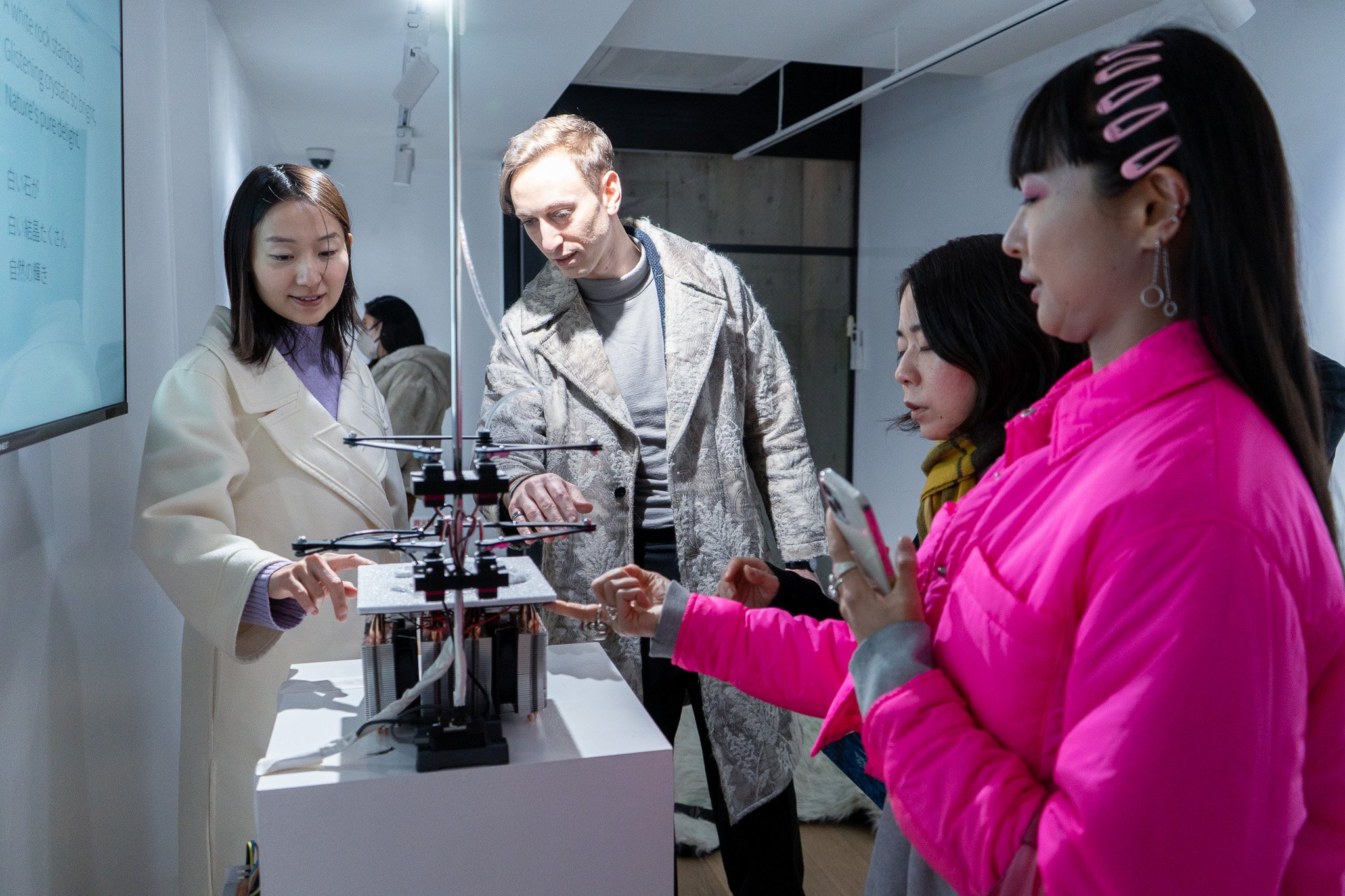
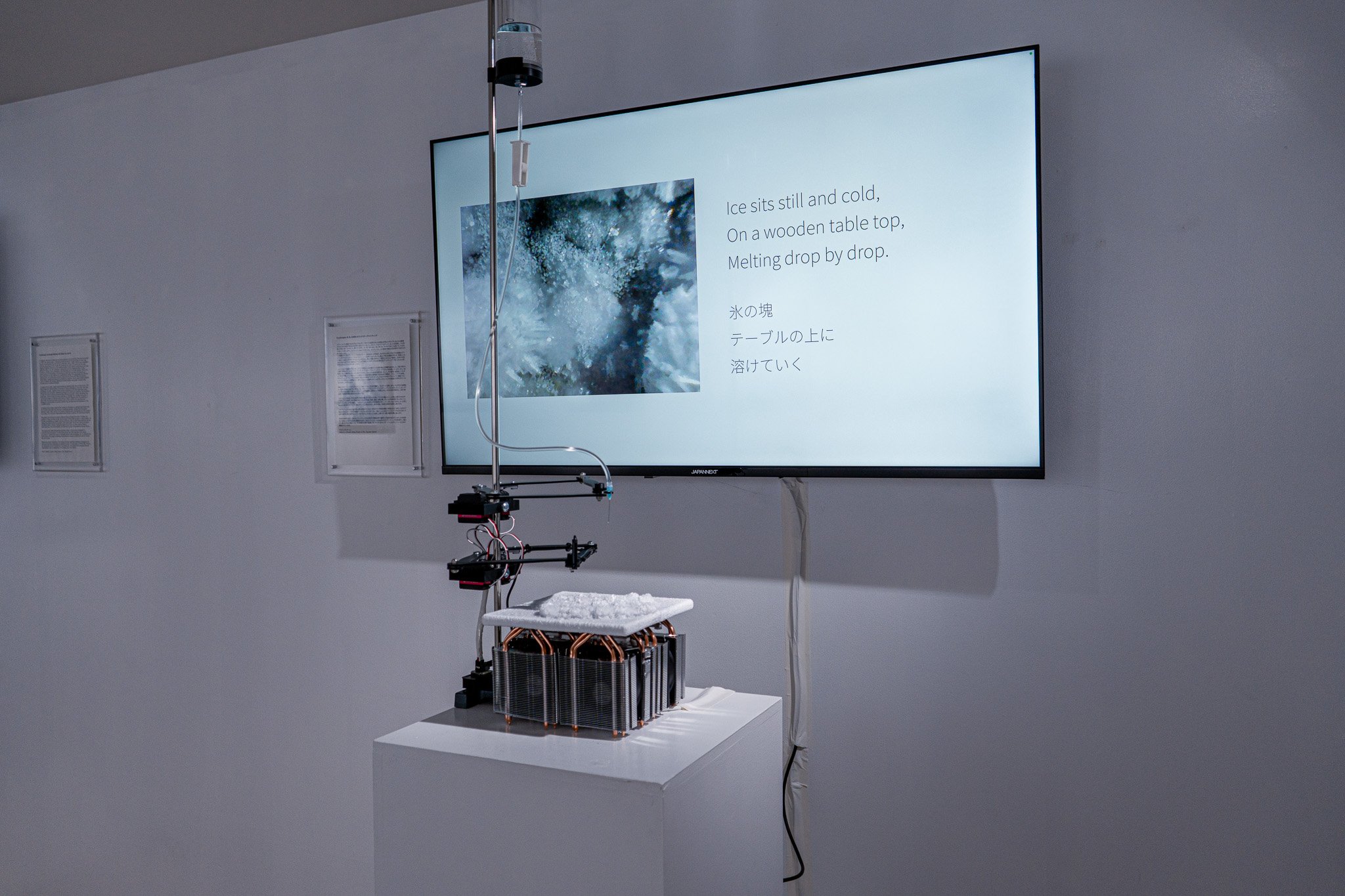
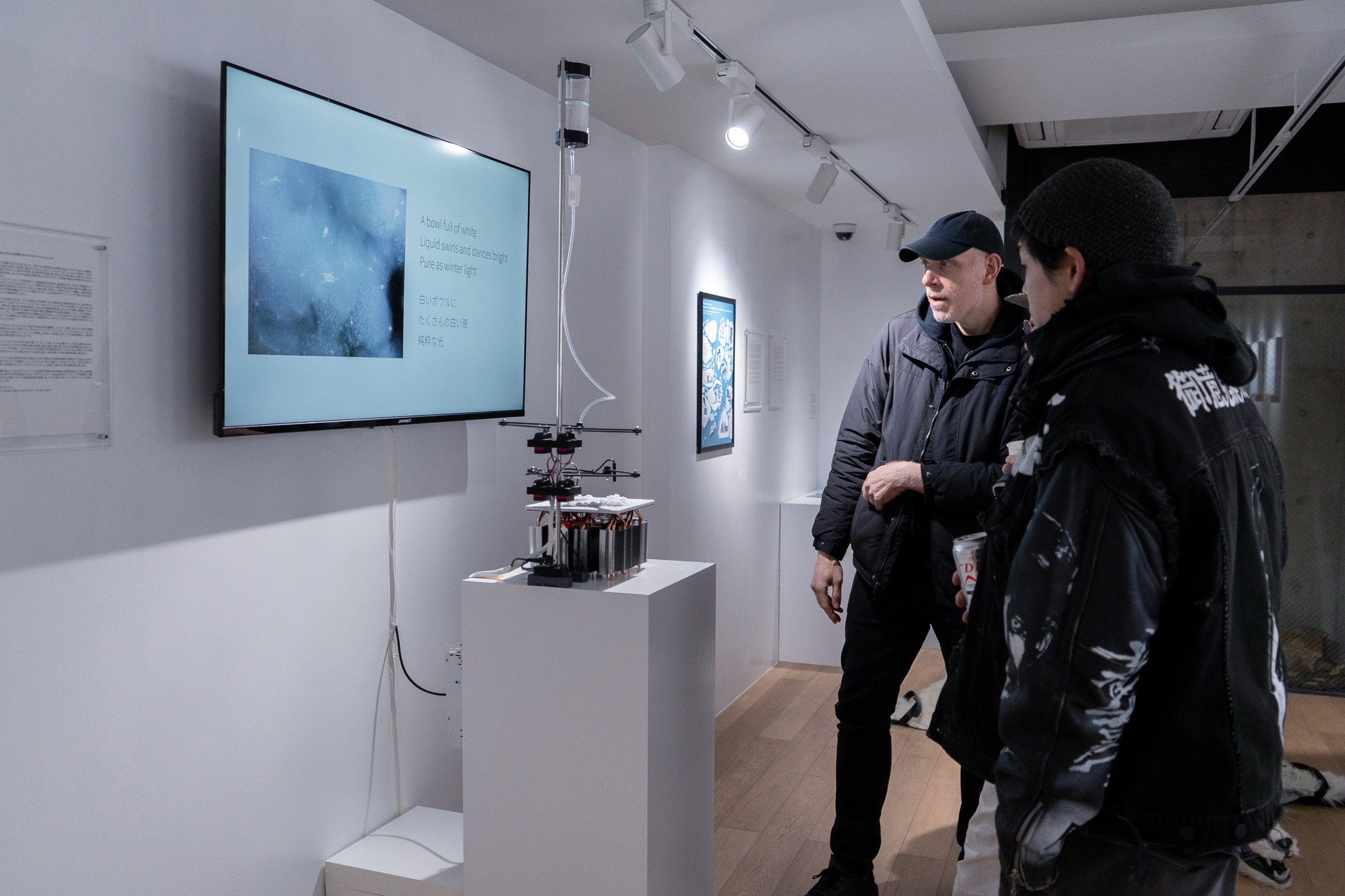
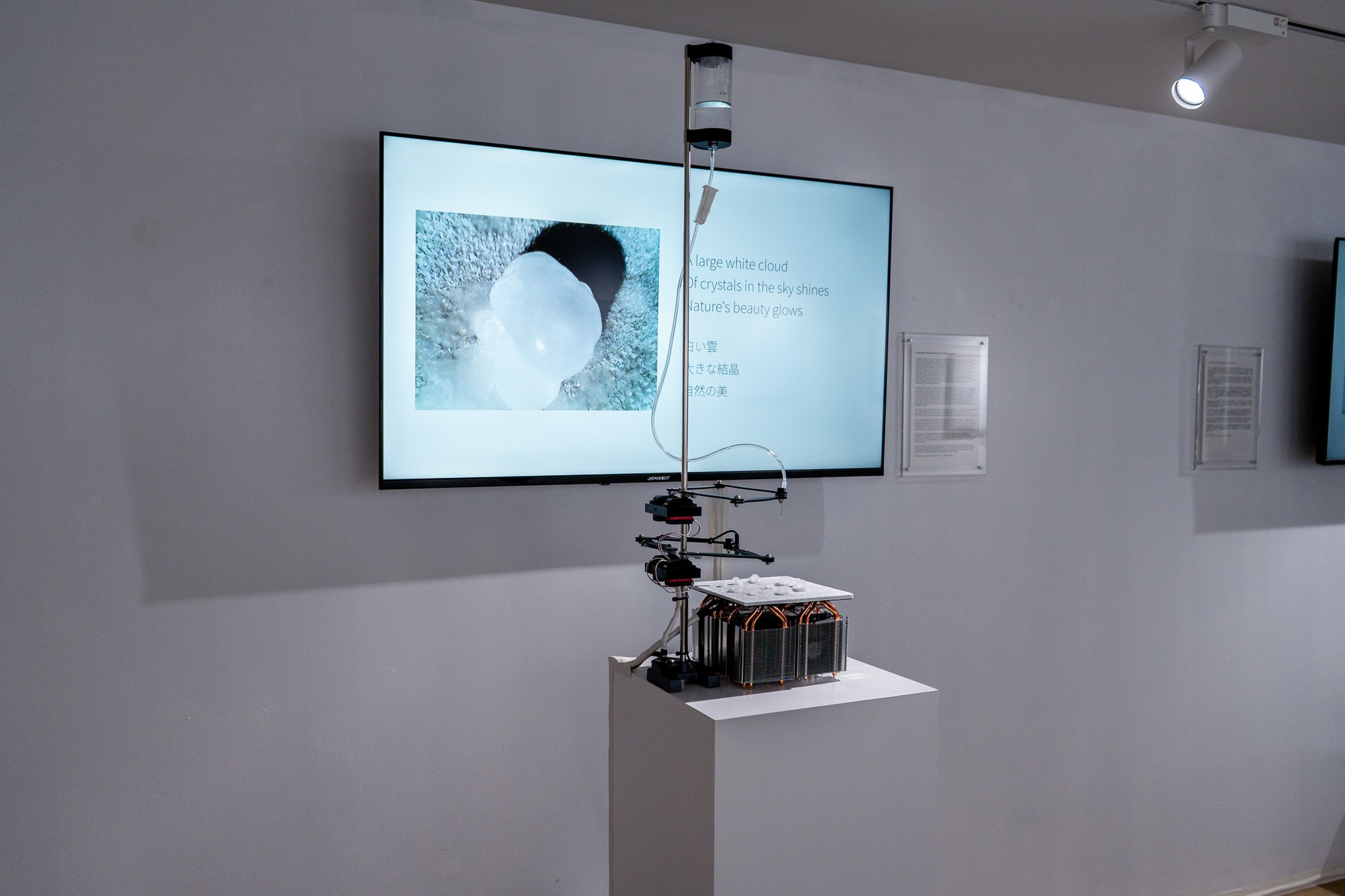
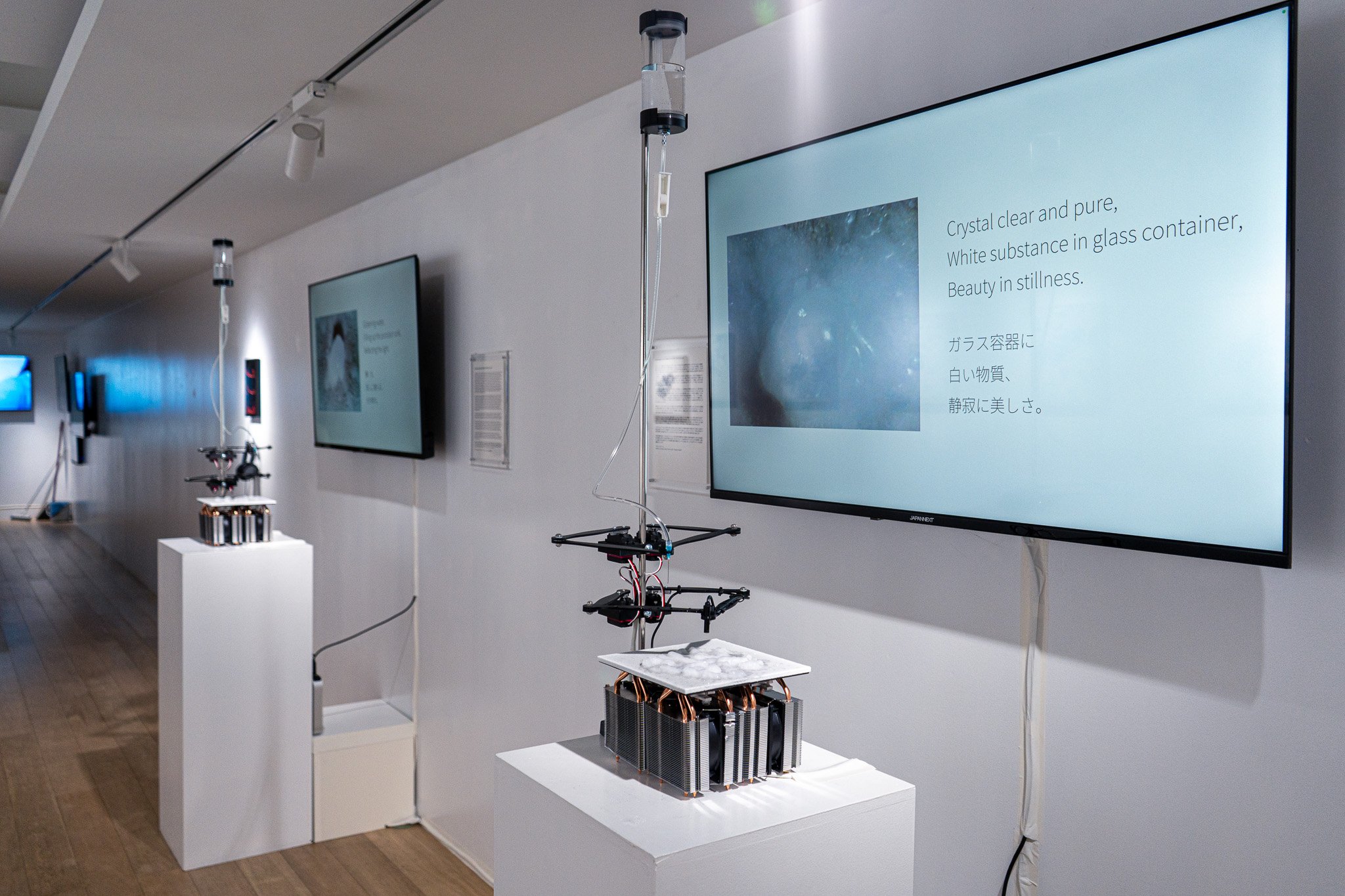
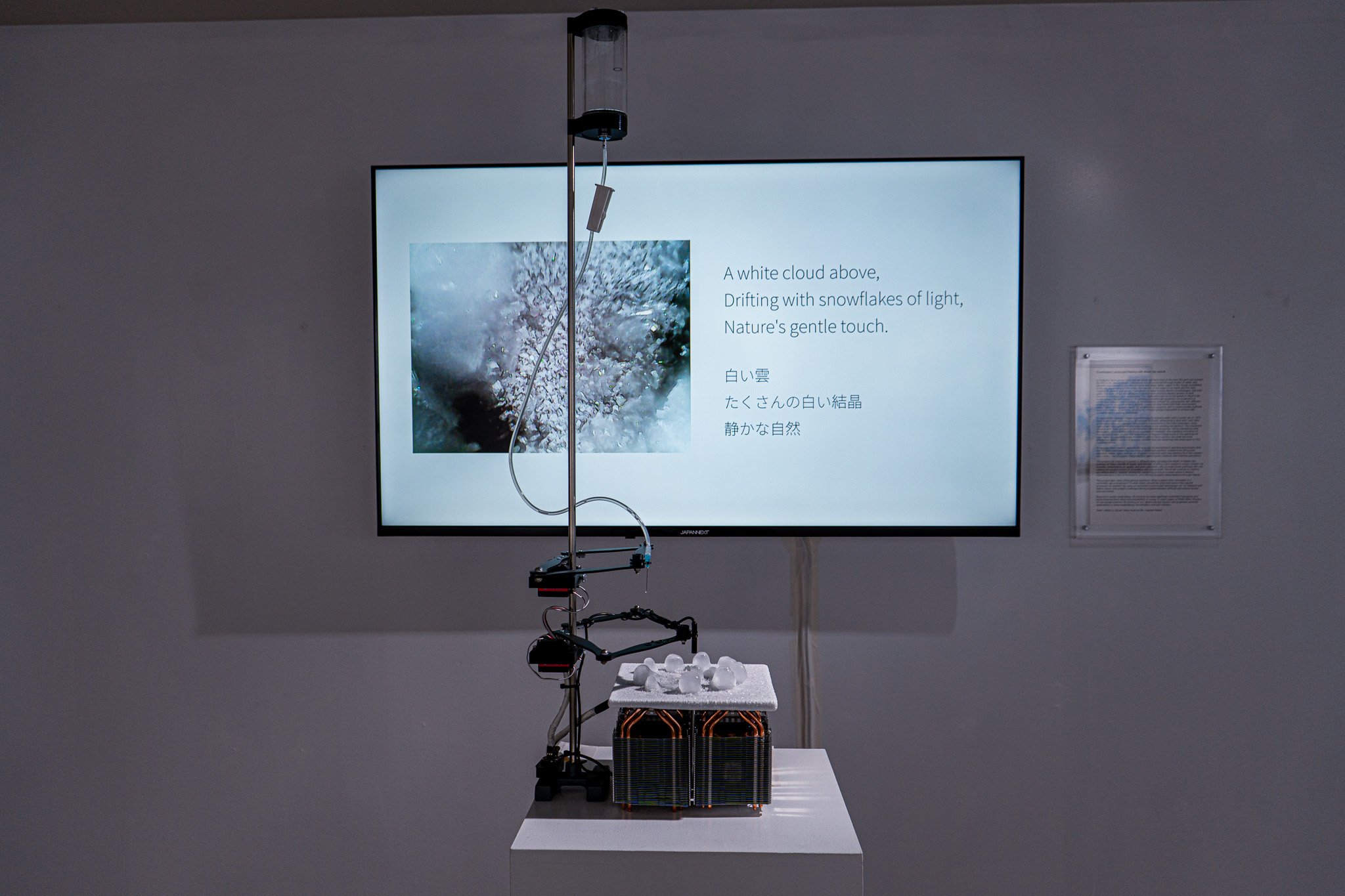
スヴァールバル諸島では木が生えておらず、一年のうち地面を見られる時間は非常にわずかです。私たちは酸素がさまざまな形態で存在する世界に囲まれていました。水を介して全てがつながっていることを実感し、その多様な形態に魅了されました。雲の中の蒸気、空に舞う雪の結晶、海に漂う波、 手の中の温かいお湯、そして氷河や海氷の荘厳な固体。水はそれぞれ独自の形態を見せ、氷の中ですら、その質感や構造は形成条件や成分に大きく依存します。
この観察から「3Dプリンティング技術を用いて、高解像度の氷彫刻や、温度変化に伴って変化する微細なテクスチャを作れるとしたらどうなるだろう?」という疑問が生まれました。融点が異なる液体を使えば、環境とともに進化する動的な彫刻を作れるかもしれません。融点の高い液体は、一時的な支えとして機能し、従来の氷型成形技術では不可能な繊細なデザインが可能になります。これは従来の3Dプリンティングで用いられる水溶性の支柱のような役割を果たします。
このコンセプトを探求するため、-15°Cに設定した冷却器の上に水滴を垂らす実験を始めました。1滴が凍るのに約20秒かかり、これは「スローテック」かつ「スロープロトタイピング」のプロセスを体現しています。冷たい金属板に対して撥水性と親水性の素材を使用し、さまざまな表面処理を施しました。 AIは自然らしさとは何かを探り定義し続け、造形される氷の中に自然らしさを検知したエリアにカメラを向け、俳句の生成を通じてその詩的な解釈を提供します。・ノグチの遊具、またはカーレ・トヴェーテルの絵画を思わせる構造が生まれました。これらの形成をマクロカメラで撮影することで、そのスケールは曖昧になり、観る人は広大な風景を見ているのか、それとも小さな結晶の世界を見ているのかを問いかけられます。
移 動 式 のマクロ カメラがリアルタイムで進 化する 氷 の 形 成 を 撮 影 し、モ ニター に 投 影 します。それぞ れの金属板は、純粋な要素である「水」「蒸 気 」「 氷 」で作られた「ランドスケープ ペインティング」となります。そして、A I システム が カメラから 捉 えた 新 た な ペ インティングを 解 釈し、俳句として表 現します。この A I の 詩 的 解 釈 は 、人 間の創 造 性と機 械 の知 覚 を融 合させたものです。
このプロジェクトは、アラスカの冬、東京の夏、オースティンの秋、アフリカの暑さといった異なる都市を巡る中で進化していきます。それぞれの場所の独自の気候、湿度、温度、空気の質、さらには汚染物質が私と共にこれらのペインティングを共創し、このプロジェクトを自然との共同創造の形としています。AIは自然らしさとは何かを探り定義し続け、造形される氷の中に自然らしさを検知したエリアにカメラを向け、俳句の生成を通じてその詩的な解釈を提供します。
こ の プ ロ ジェクト は ま た 哲 学 的 な 問 い を 投 げか けます。制 御された 実 験 室 環 境 で再 現された「 自 然 」とは 何 か ? 創 造 の 自 然 プ ロ セス に ど の程 度 アー ティストが 介 入 すべ きか ? 極 め て 人 工的 なテクノロ ジ ーであるA I を用 いて自 然 を解 釈し 再 定 義 することで、このプ ロ ジェクトは 人 工と自 然 、人 間 と非 人 間 の 境 界 を 問 い 直します。
芸術的意義を超えて、氷の3Dプリンティングは生物学や環境分野で重要な可能性を秘めています。生体適合性が重要な分野での応用が期待される中 、「 氷 のミクロスケール 自 由 形 状 3 Dプリンティン グの物理学」と題された最近のPNAS論文では、その物理的性質や組織工学、マイクロ流体工学、ソ フトロボティクスへの応用が議論されています。




